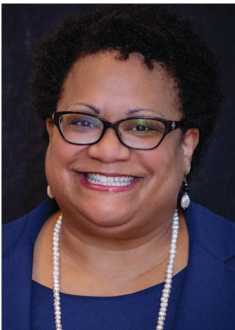From the President
| Jurisdiction | Georgia,United States |
| Citation | Vol. 26 No. 5 Pg. 0006 |
| Pages | 0006 |
| Publication year | 2021 |
Full Transparency: Let’s Start With the Basics

DAMON ELMORE,
Executive Director
State Bar of Georgia
I began writing this article after watching the live stream of the last five hours of Sine Die in the Georgia Legislature last month. That was an experience! I have always understood the importance of the Legislature and its direct and powerful impact on my life as a citizen. However, after following along with the process as it unfolded and watching the inner workings over the 2021-22 regular session while serving as president of the State Bar of Georgia, I now have a greater appreciation for the work that it does and how it not only impacts me as a citizen, but our profession as a whole. That's the benefit of transparency.
In that vein, I endeavor to give you, my fellow Bar members, some insight on the inner workings of our State Bar for greater transparency. I will answer the questions I am often asked about the State Bar when speaking with local bar associations and working with fellow Bar members, judges and members of the public. It dawned on me then, watching these public servants handle the business of our state on behalf of our citizens, that many of our members, despite our efforts, don't have a clear understanding of the organization and functions of the State Bar, why it is important to the practice of law in our state, and what its duties and responsibilities are to both the members of the organization as well as the public we serve.
Organizational Structure
The State Bar of Georgia is a mandatory bar and a self-governing body, meaning we govern the practice of law in this state and require every lawyer who wants to practice law in Georgia be a member. We are an arm of the Supreme Court of Georgia; the Supreme Court ultimately has final say as to the rules promulgated by the State Bar and the disciplinary actions taken against members of the Bar. The leadership of the Bar includes the Board of Governors, which essentially serves as the "congress" of the State Bar. It is comprised of members representing 50 specific judicial circuits, some of which have multiple representatives dependent upon the total number of active Bar members in a particular circuit. The post number associated with each post in any given circuit only serves to identify that particular position. It has no purpose other than to identify the number of representatives in the circuit. Board members serve two-year terms, with about half of the Board being up for election or re-election each election cycle, usually even-numbered posts one year and the odd-numbered posts the following year.
Board Meetings
Rule 1-303 states that "the Board of Governors shall hold at least three regular meetings in each year ..." The Board currently gathers four times a year, with meetings in the fall, winter, spring and two in the summer. The Fall and Spring Meetings are smaller and less likely to have associated CLE components or larger functions.
The Midyear Meeting, held in January, is the second largest meeting of the Bar. The largest meeting of the Bar is referred to as the Annual Meeting, and its format allows for two Board meetings to be held over the course of two days, Friday and Saturday. The Friday meeting is chaired by the outgoing president and includes a general members' meeting where all Bar members may participate; reports and updates on work that has occurred throughout the year; awards presentations; and end-of-the-year addresses. The Saturday meeting is chaired by the president-elect who will be formally installed as president, along with the other new officers, that evening. This is the unofficial start of the new Bar...
To continue reading
Request your trial
